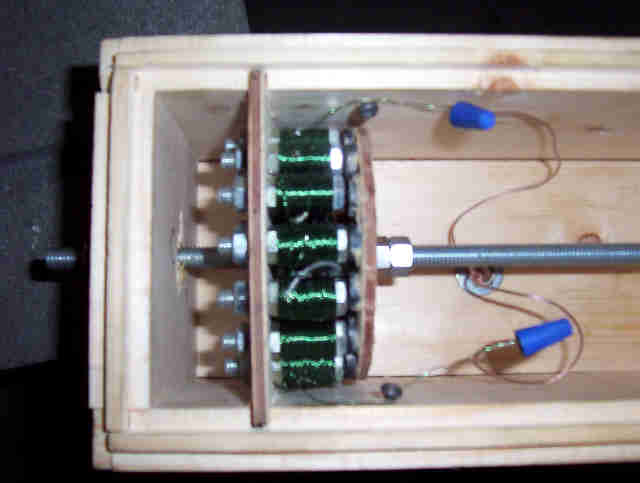Frank, looking good, by next summer you'll probably be ready for a bike race or two. I am thinking that as noted above, the flux path would be more efficent if connected between coils, but the iron sand cores should still increase the magnetude of the change in the flux deeper into the coil. I base this on experiments with one of my first alternators, which used bolts to carry the flux, and had no return path.

It was not a particularly good design, but it worked for its purpose and shows that even with no return path, the cores effect the flux in the coils. I think your design will lose some efficiency because of this as well, because you will not see as great of a change in the magnetic field across the coils as you migh have. That being said, it does work, and appears to work acceptably well at that.
I have since learned from this site that there are efficiency issues related to the cores as well however. In the case of bolts eddy currents induced within them contribute to substantial losses, however their are additional losses from the energy lost in the magnetic material due to energy consumed in aligning and realigning the materials magnetic fields, these are called hysterisis losses.
Of course additionally there are the resistance losses in the copper conductor as well as mechanical friction losses too. Copper losses and hysterisys losses are to some extent traded against each other in design, and of course we all strive to reduce and eliminate the frictional losses.
The copper losses can be reduced in design, by using conductors with the least resistance possible. This means increasing the gauge of the copper, and using as much of the available space as possible. One way to reduce resistance losses in the wire, is to maximize the change in flux across the conductor, that way fewer turns are required, and larger conductors with less resistance can be used. I think this is why these axial flux dual rotor air core alternators have become popular for these low power, high efficiency applications. The magnetic circuit is complete on both sides of the coil, and utilizing powerful neodymium magnets, huge changes in flux can be achieved across the coils with minimal losses due to hysterisis since there is minimal realignment of molecules in the core because the air or plastic is much less effected by the changes in the flux.
Flux or DanB can probably explain this a little bit better than I , but that is basically how I think of it reigh now. Rich